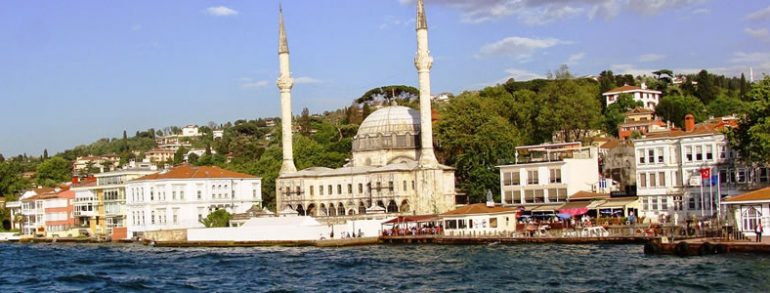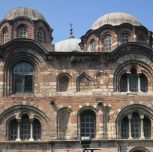Beylerbeyi Mosque was founded on the Anatolian shore of the Bosphorus next to the Beylerbeyi quay. It was built by Sultan Abdülhamid I (1725-1789) in 1778 in memory of his mother, Rabia Sultan and designed by the architect Tahir Ağa. After the collapse of the Istavroz (Cross) Palace in the middle of the 18th century, which had previously been standing on the present site of the Beylerbeyi Mosque, the Beylerbeyi Mosque was built on the site of the Hırka-i Şerîf Chamber (private chamber of the cloak of the prophet Muhammad pbuh), which had been carried to Istavroz Palace by Sultan Ahmed I (1590 –1617).
The last prayer section of the Beylerbeyi Mosque was converted into its present state, the single minaret was pulled down, and instead of the previous single minaret, two new minarets were erected on both sides of the mosque during the period of Sultan Mahmud II (1784-1839). Additionally, Sultan Mahmud II added a muvakkithane (time-keeping room) as well as a fountain located on seaside of the complex. The ceiling of the central prayer area of the mosque, which has a size of 14.60 x 14.60m, consists of one large dome and five half domes. The ceiling of the mosque containing the large dome was extraordinarily placed on two pulleys and the circumscribed circle of the upper pulley with its twenty windows illuminated the interior of the mosque. A sharp curve, round, curly S-shaped and C-shaped of four different arch samples were used in the mosque. After the fires of 1969 and of March 13th 1983, the mosque was extensively restored twice.










